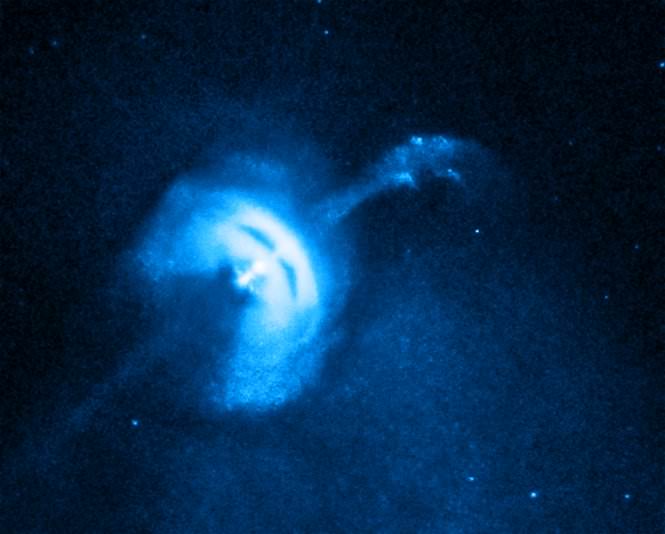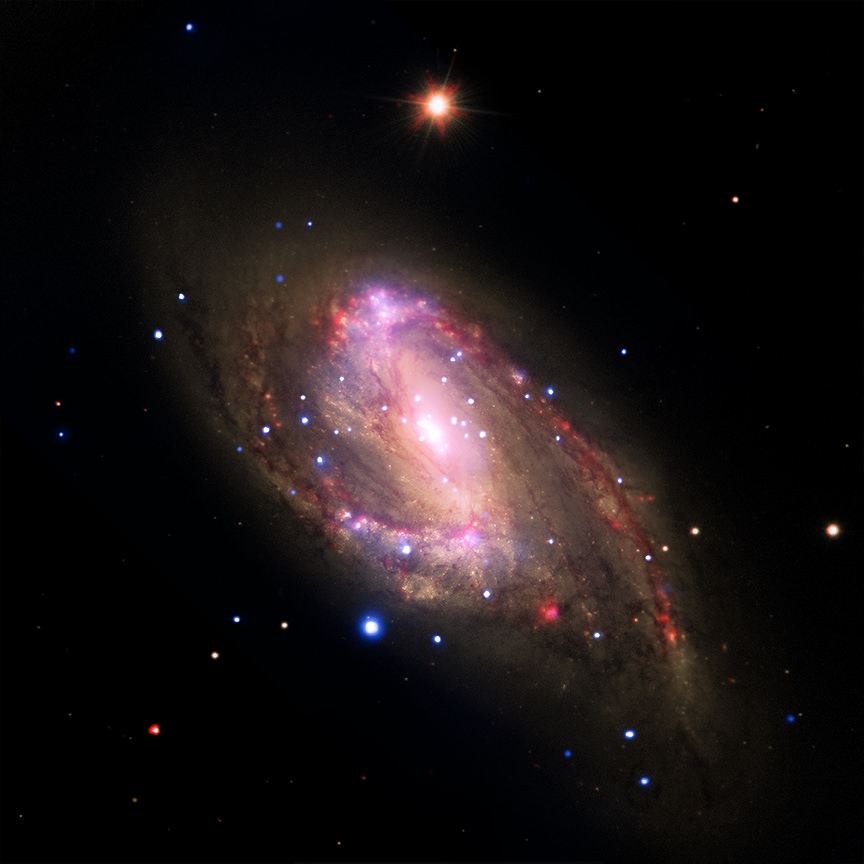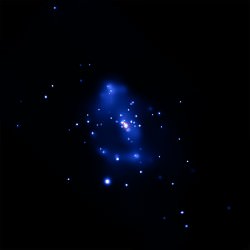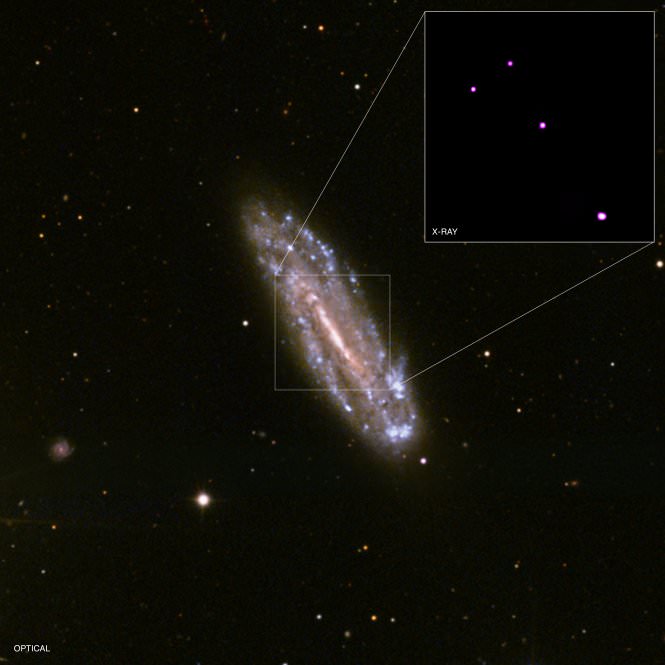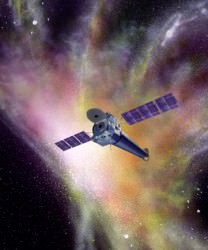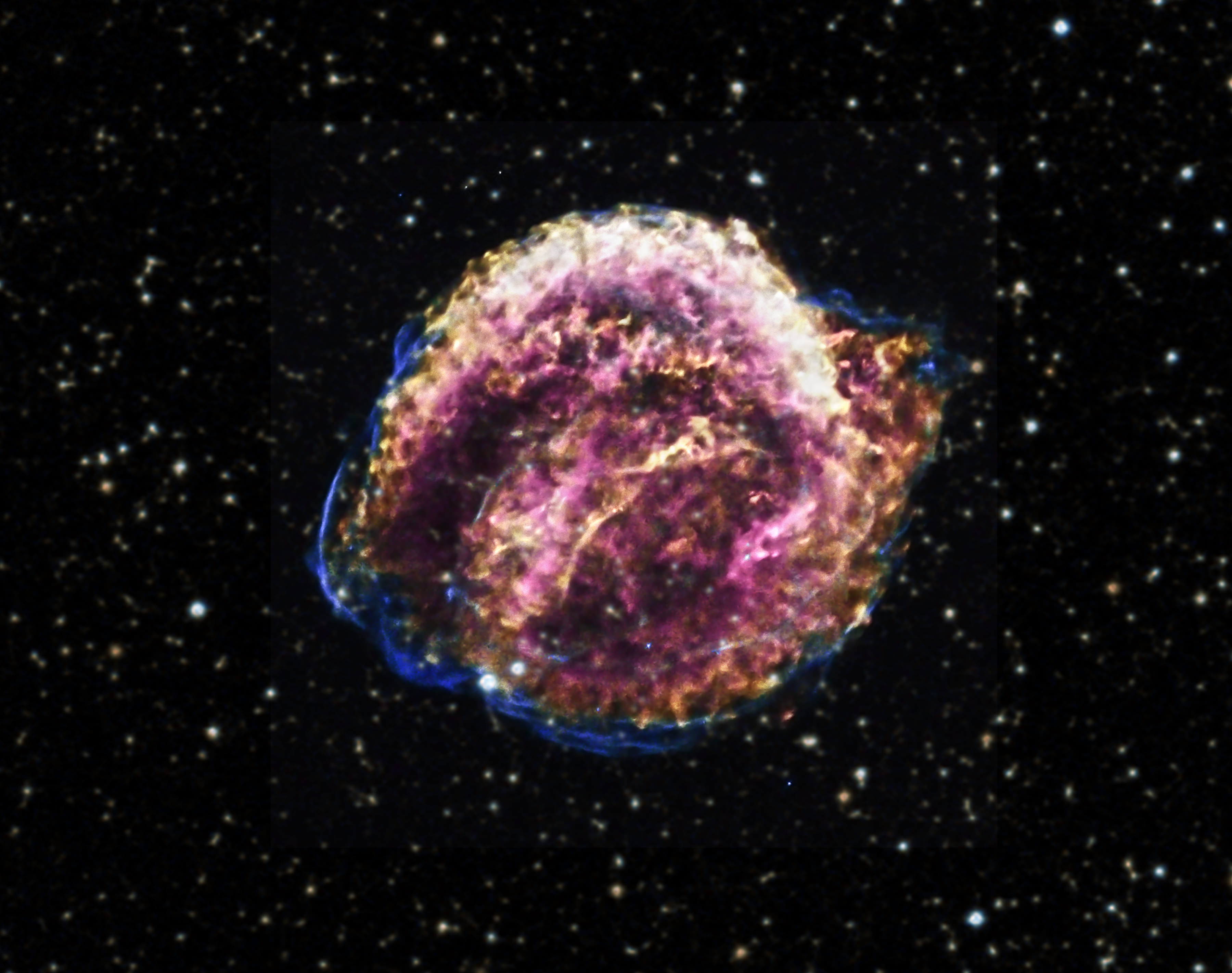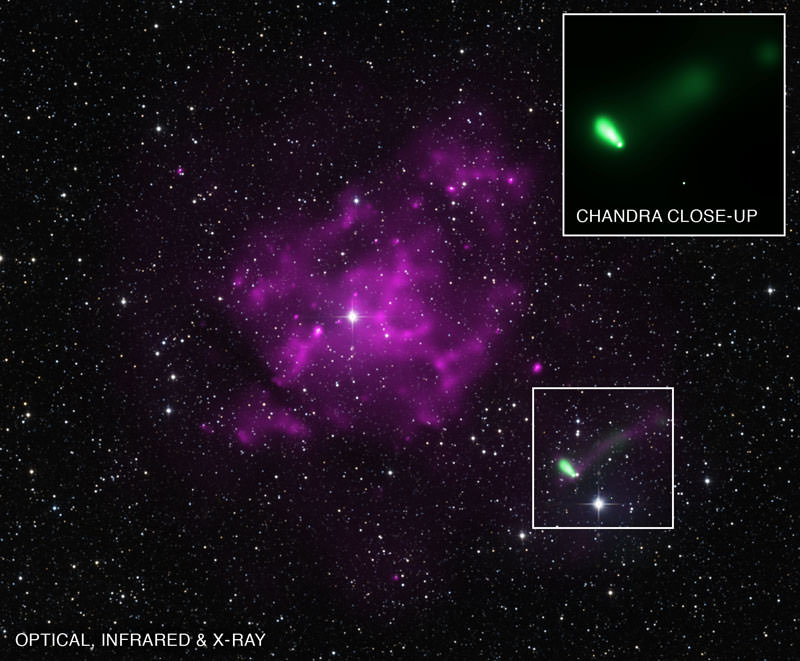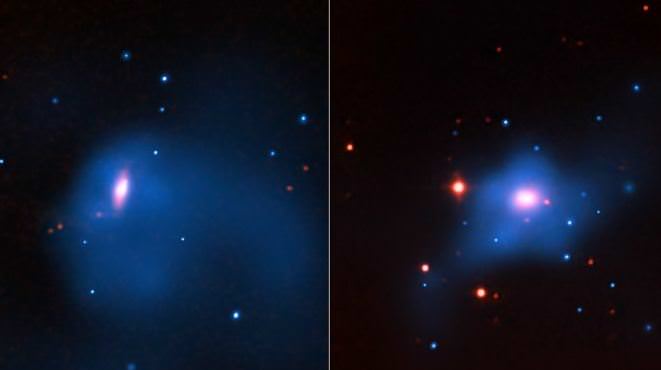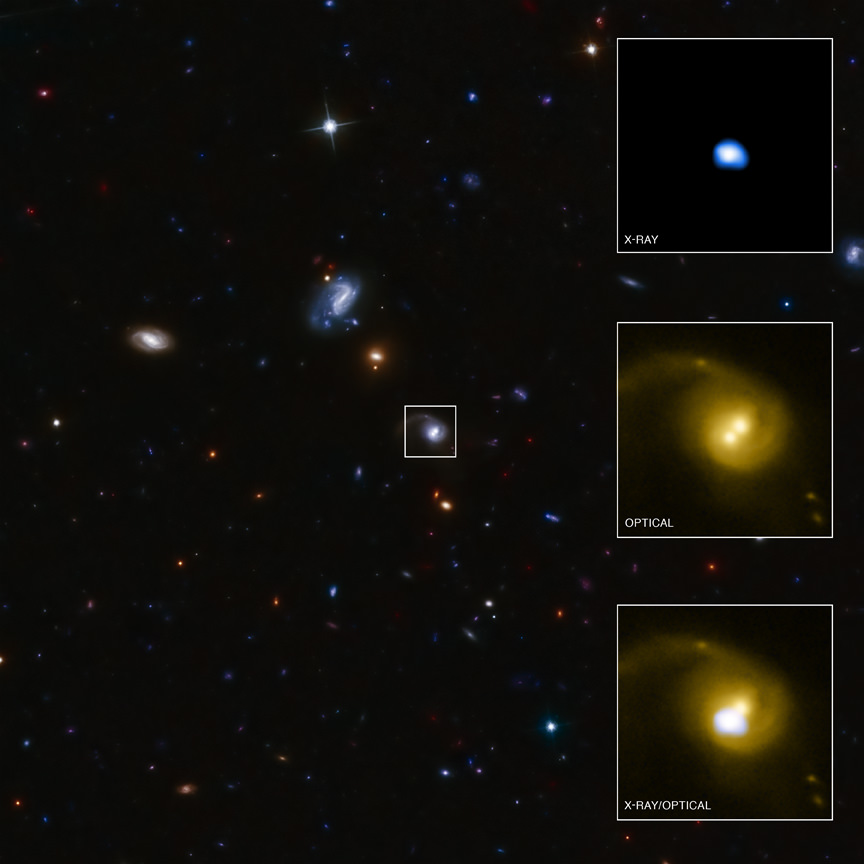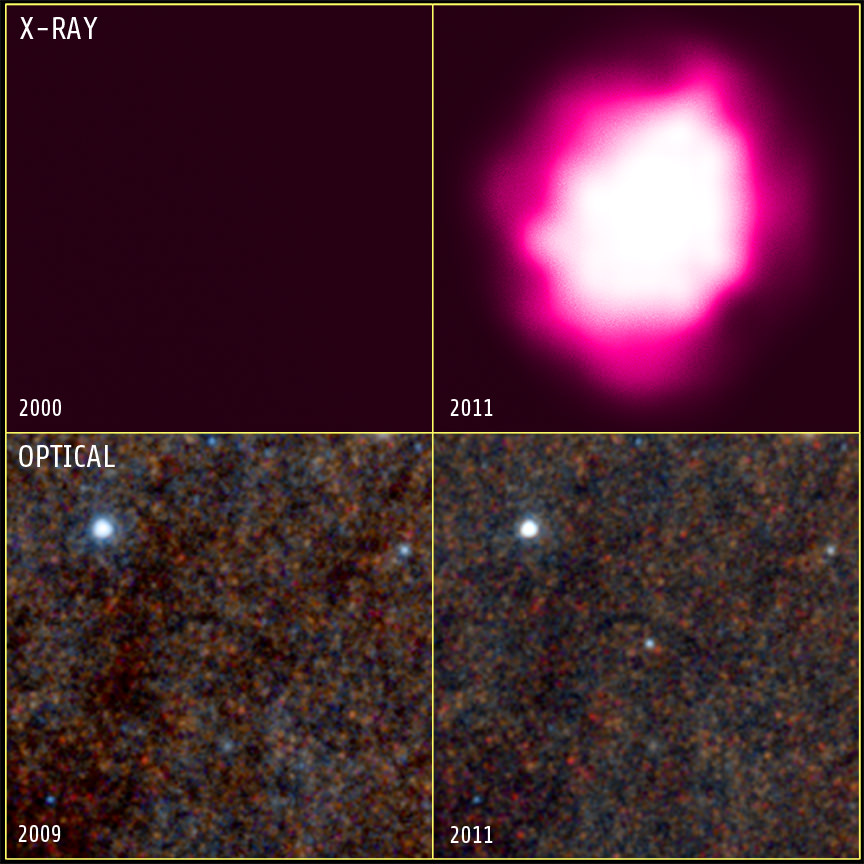This incredible new movie of the Vela pulsar has the unnerving appearance of the Phantom of the Opera – wearing not only a mask, but also a steam-blowing hat like the Tin Man in “The Wizard of Oz.” What you are seeing here are observations from the Chandra X-ray Observatory, showing a fast moving jet of particles produced by a rapidly rotating neutron star. Scientists say these observations may provide new insight into the nature of some of the densest matter in the universe.
The Vela pulsar is about 1,000 light-years from Earth, about 19 km (12 miles) in diameter, and makes a complete rotation in 89 milliseconds. As the pulsar whips around, it spews out a jet of charged particles that race along the pulsar’s rotation axis at about 70 percent of the speed of light. The Chandra data used in the movie were obtained from June to September 2010, and it may suggest the pulsar may be slowly wobbling, or precessing, as it spins. The period of the precession, which is analogous to the slow wobble of a spinning top, is estimated to be about 120 days.
“We think the Vela pulsar is like a rotating garden sprinkler — except with the water blasting out at over half the speed of light,” said Martin Durant of the University of Toronto in Canada, who is the first author of the paper describing these results.
The eight images shown in the movie suggest that the pulsar may be slowly wobbling, or precessing, as it spins. If the evidence for precession of the Vela pulsar is confirmed, it would be the first time that a jet from a neutron star has been found to be wobbling, or precessing, in this way.
One possible cause of precession for a spinning neutron star is that it has become slightly distorted and is no longer a perfect sphere. This distortion might be caused by the combined action of the fast rotation and “glitches”, sudden increases of the pulsar’s rotational speed due to the interaction of the superfluid core of the neutron star with its crust.
A paper describing these results will be published in The Astrophysical Journal on January 10, 2013.
This is the second Chandra movie of the Vela pulsar. The first one, released in 2003, looks like a Halloween Jack-o-lanatern gone wrong:
This movie contains shorter, unevenly spaced observations so that the changes in the jet were less pronounced and the authors did not argue that precession was occurring. However, based on the same data, Avinash Deshpande of Arecibo Observatory in Puerto Rico and the Raman Research Institute in Bangalore, India, and the late Venkatraman Radhakrishnan, argued in a 2007 paper that the Vela pulsar might be precessing.
The Earth also precesses as it spins, with a period of about 26,000 years. In the future Polaris will no longer be the “north star” and other stars will take its place. The period of the Vela precession is much shorter and is estimated to be about 120 days.
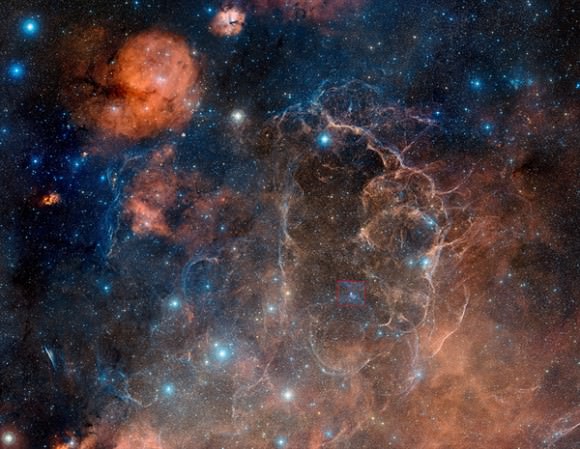
The supernova that formed the Vela pulsar exploded over 10,000 years ago. This optical image from the Anglo-Australian Observatory’s UK Schmidt telescope shows the enormous apparent size of the supernova remnant formed by the explosion. The full size of the remnant is about eight degrees across, or about 16 times the angular size of the Moon. The square near the center shows the Chandra image with a larger field-of-view than used for the movie, with the Vela pulsar in the middle.

Source: NASA

